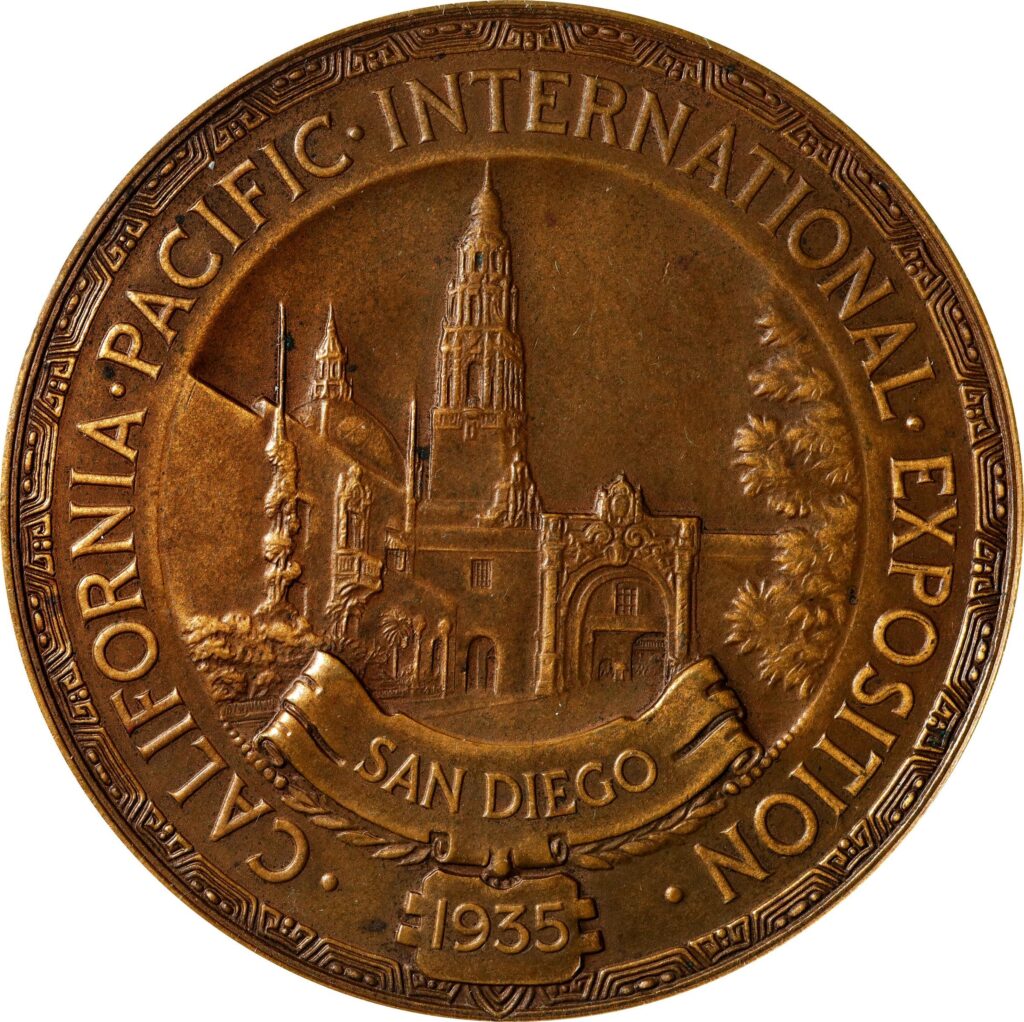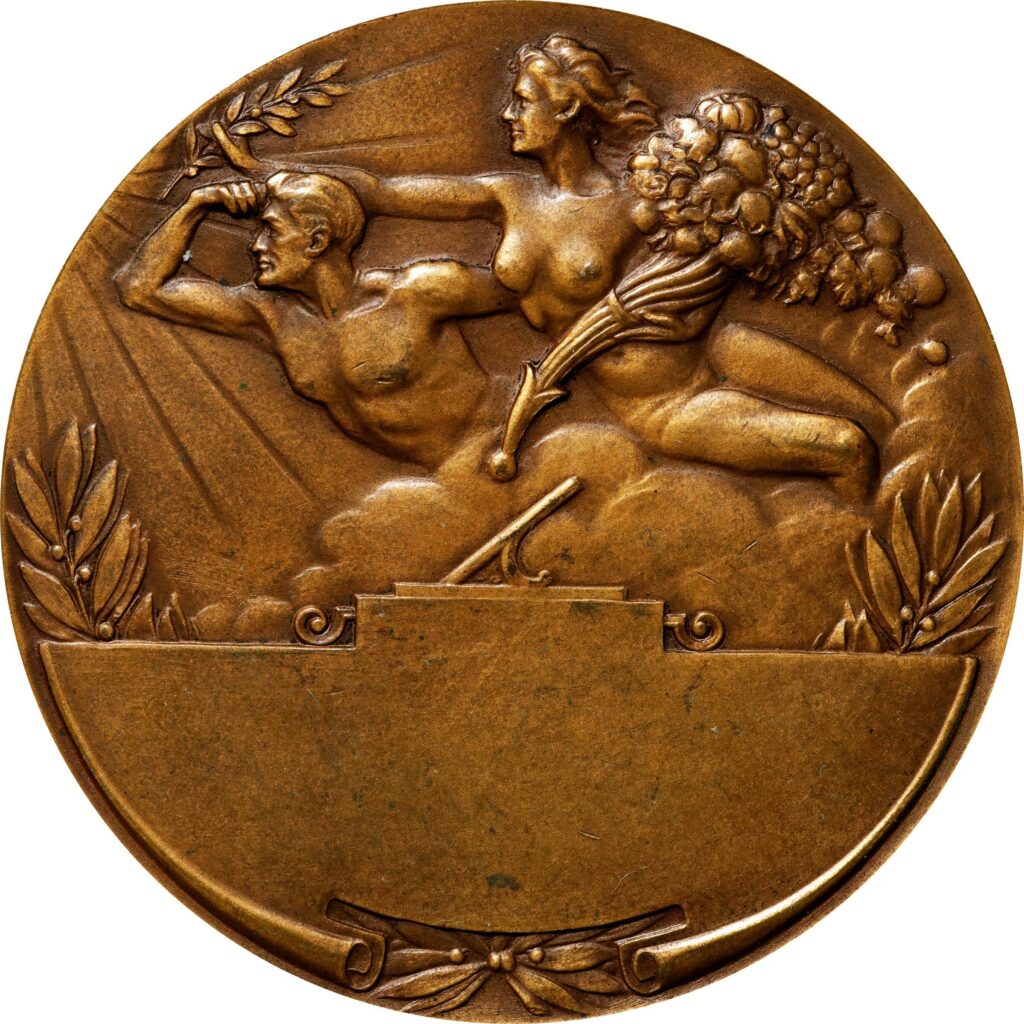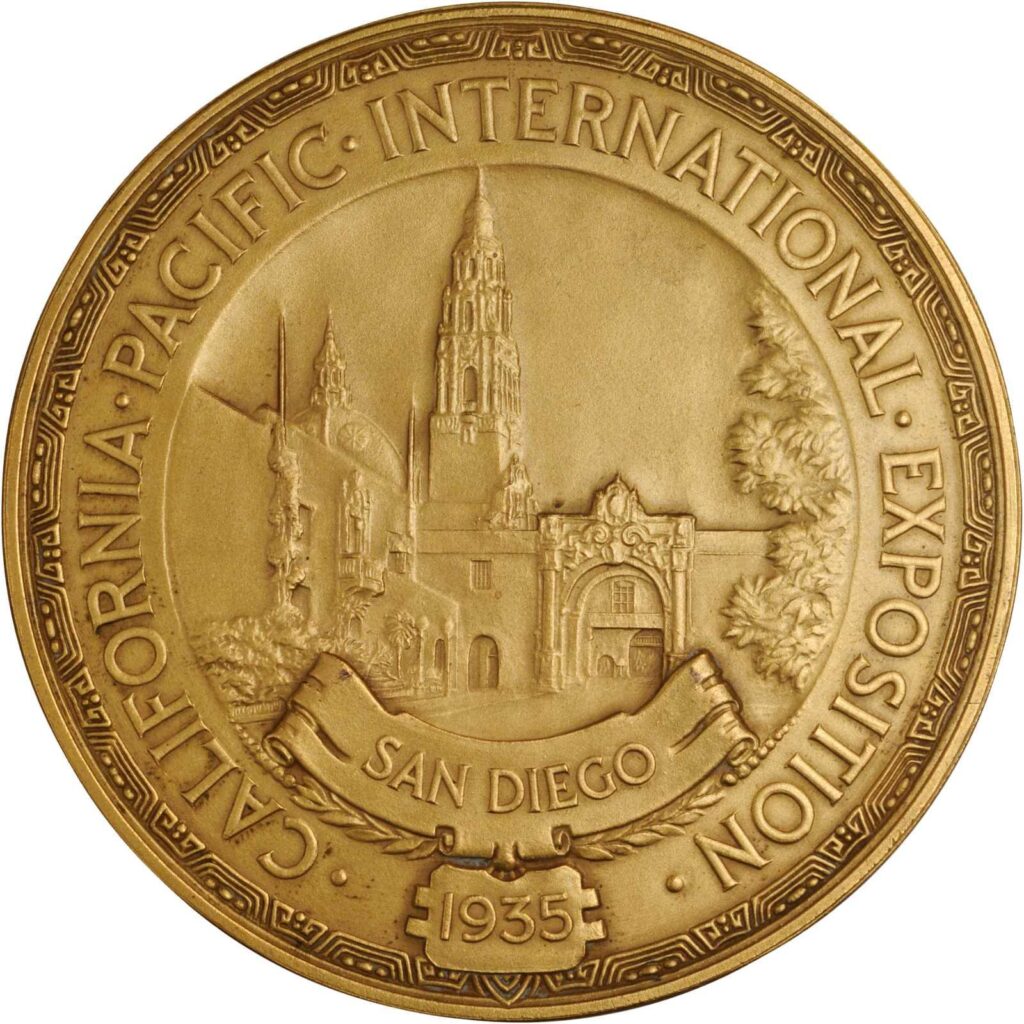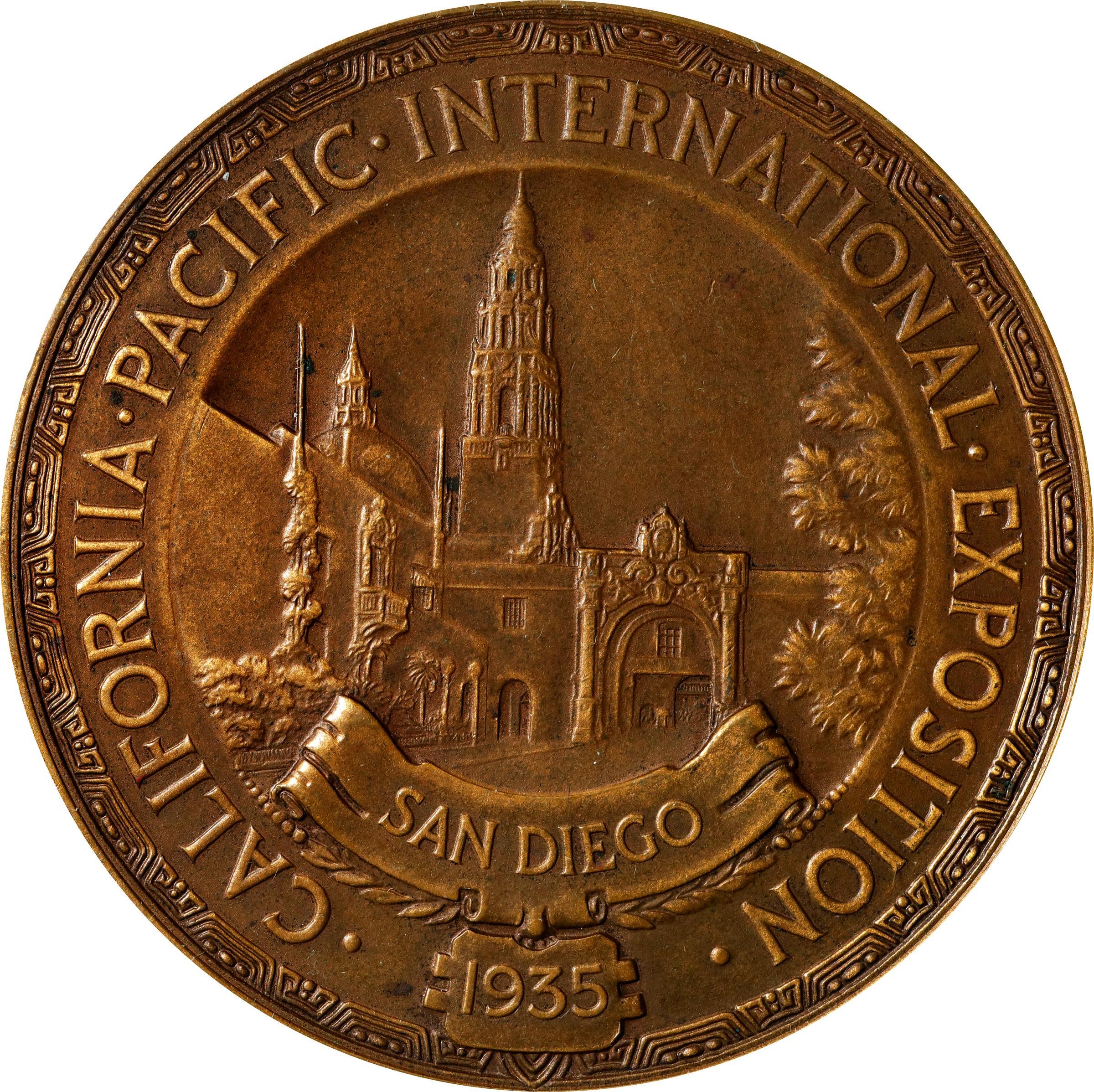The 1935 California-Pacific International Exposition, a showcase of innovation and cultural diversity, took place in San Diego’s picturesque Balboa Park. Opening on May 29, 1935, and running through November 11 of that year, it attracted visitors from across the globe. The exposition was an emblem of progress, highlighting the latest technological, agricultural, and artistic achievements of the era. The event drew over 7 million attendees, offering them a glimpse into the advancements that promised a brighter future, while lifting spirits amidst the Great Depression.
Award Medals 1935 California-Pacific Exposition

70mm Bronze Award Medal from the 1935 California-Pacific International Exposition
The obverse of the medal features an intricate design showcasing the iconic California Tower and Archway at Balboa Park, which was the central structure of the exposition. The detailed engraving celebrates the architectural grandeur and significance of the location. “SAN DIEGO” is prominently displayed on a scroll at the bottom, with the year “1935” marking the event’s historic moment. The border is adorned with a series of decorative elements, adding to the medal’s commemorative value.

Reverse of 1935 Bronze Expo Medal
On the reverse, a captivating scene unfolds with nude male and female figures, allegorically representing the fusion of agriculture and industry, flying left toward a rising sun, a classic symbol of hope and a new dawn. The figures are encircled by a laurel wreath, a traditional emblem of victory and achievement. Unawarded. The medal’s edge is inscribed with the manufacturer’s mark “MEDALLIC ART CO. N.Y.,” pinpointing its prestigious origin.
Collectors comments: The above bronze award medal was probably the default medal issued. However some medal winners could pay to have their medal gold plated like the one below. I have not been able to find any information about the number of award medals issued. There is usually a gold, silver and bronze categories but sometimes only bronze medals are issued to all winners. If you have one that is not listed here, please contact me via privacy link on the bottom of this age. Also there were some nice commemorative medals like the Ford Medal, the Ford V-8 Medal, and the California Pacific International Exposition Commemorative Half Dollar but currently that is not in the scope of this page. Thanks. Robert

Interesting Facts about the 1935 San Diego Exposition
- Notable Medal Recipients: While specific individual medal recipients from the exposition are not well documented in widely available sources, awards were typically given to innovators and exhibitors who showcased advancements in technology, art, and industry.
- New Products Introduced: Like many expositions of its time, the 1935 California-Pacific International Exposition was a platform for the introduction of new technologies and products. For instance, it highlighted advancements in aeronautics and celebrated the completion of the Hoover Dam.
- Celebrities Attending: The event attracted numerous dignitaries and celebrities of the era. In particular, President Franklin D. Roosevelt visited the exposition, which was a significant draw.
- Notable Events: The exposition was particularly known for its opulent and exotic architecture, with structures that blended fantastical elements with art deco style. The “Palace of Electricity” and “Palace of Water and Transportation” were some of the popular buildings.
- Legacy: Many of the buildings constructed for the exposition are still in use today in San Diego’s Balboa Park, contributing to its reputation as a cultural hub.
- Attendance: Over seven million visitors attended the exposition during its two seasons, from 1935 to 1936, despite the challenges of the Great Depression, which speaks to its allure and significance.
The exposition left a lasting legacy on San Diego, contributing to its cultural and architectural heritage, and demonstrating the city’s potential and progress during the mid-1930s.
